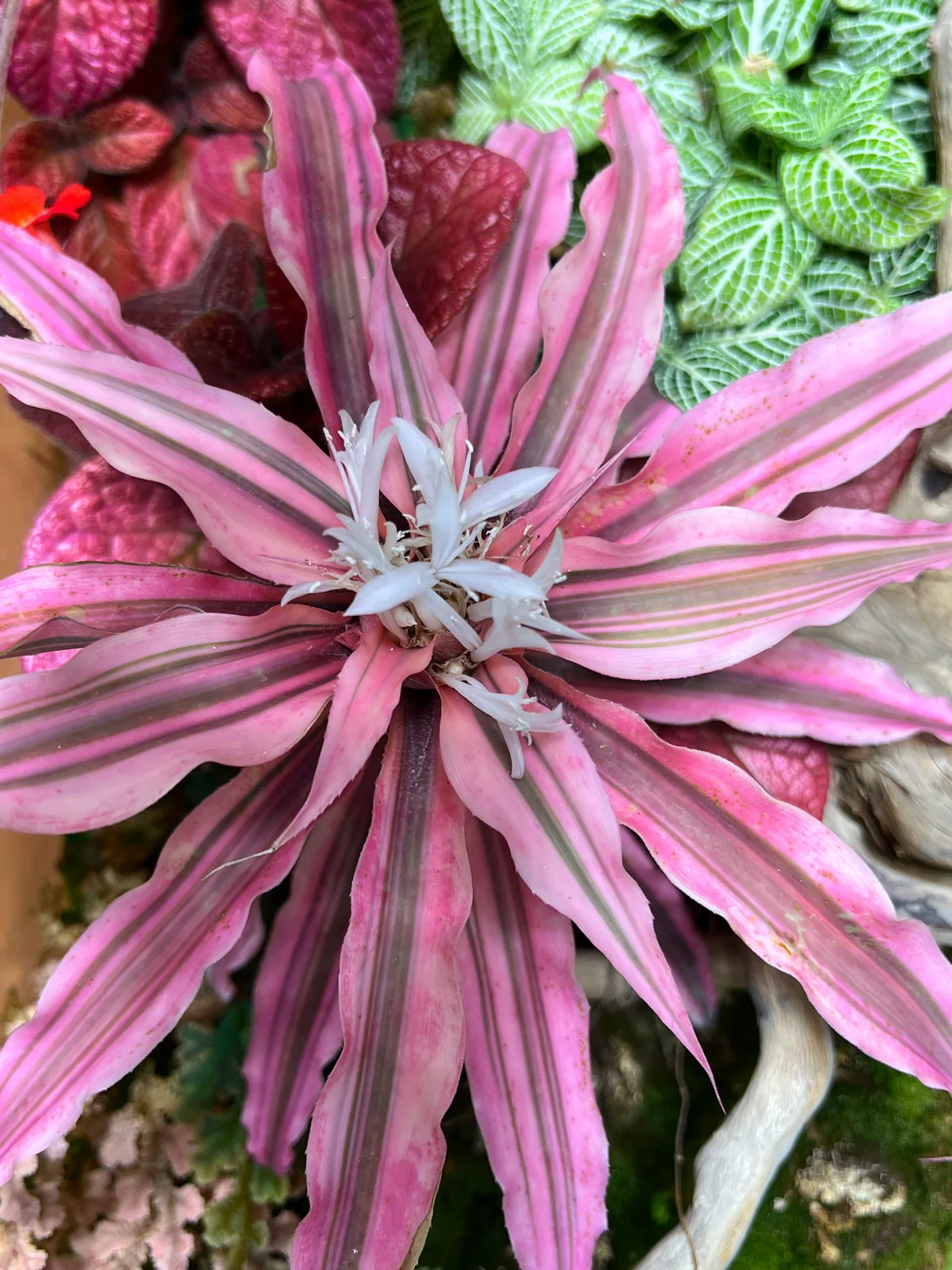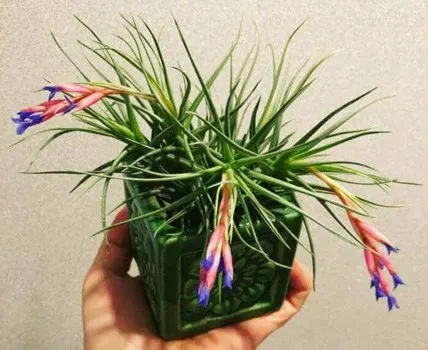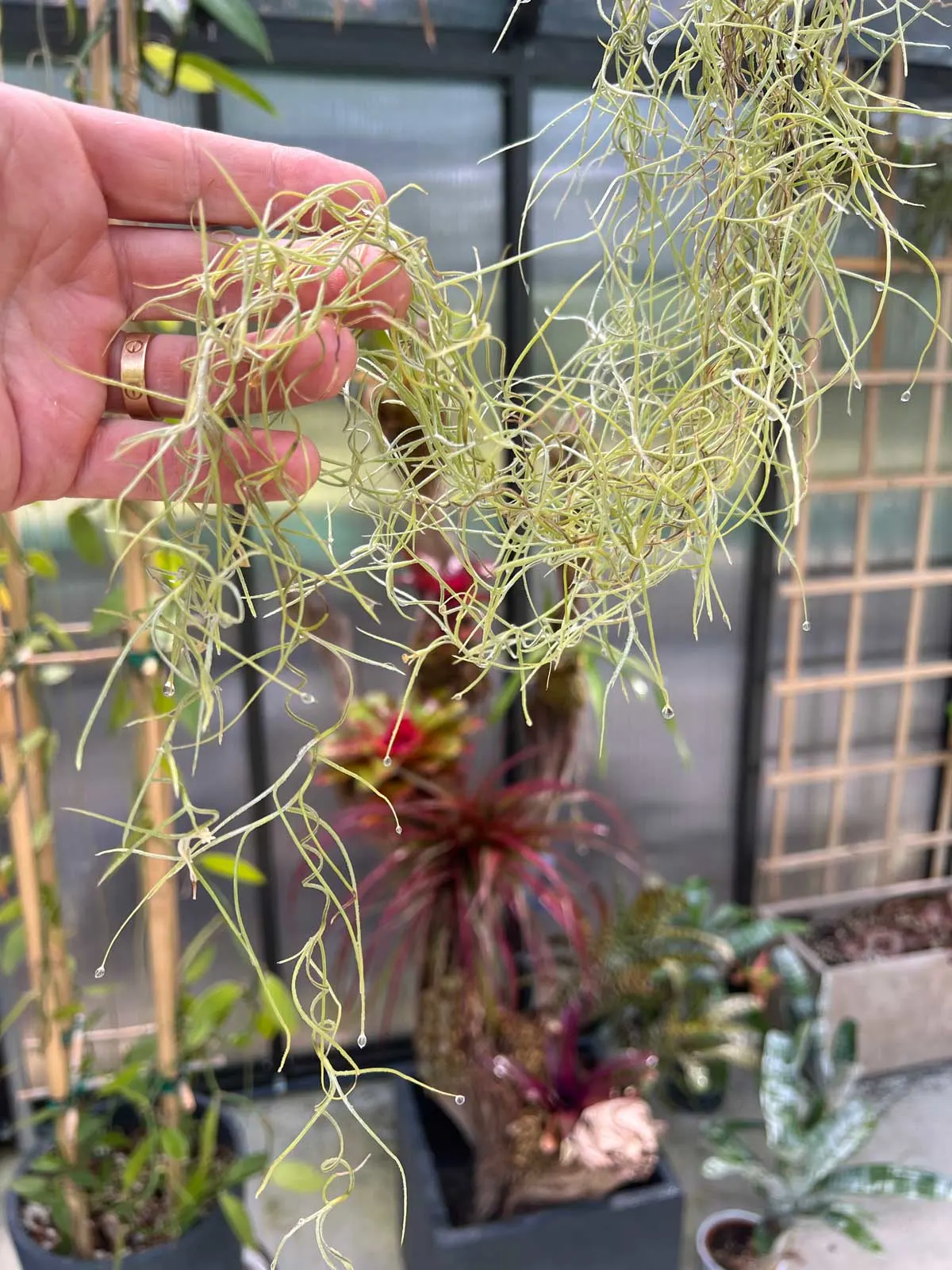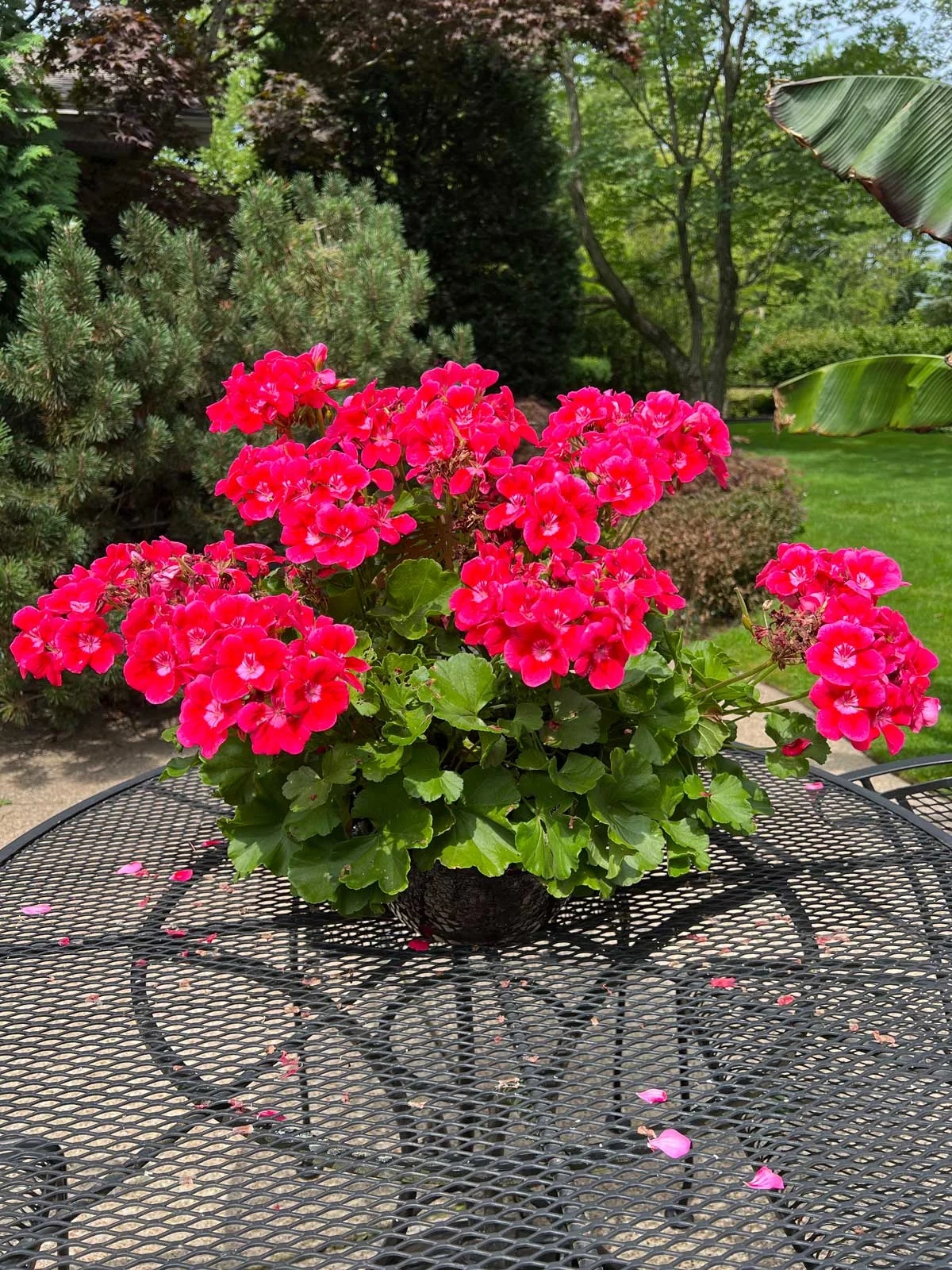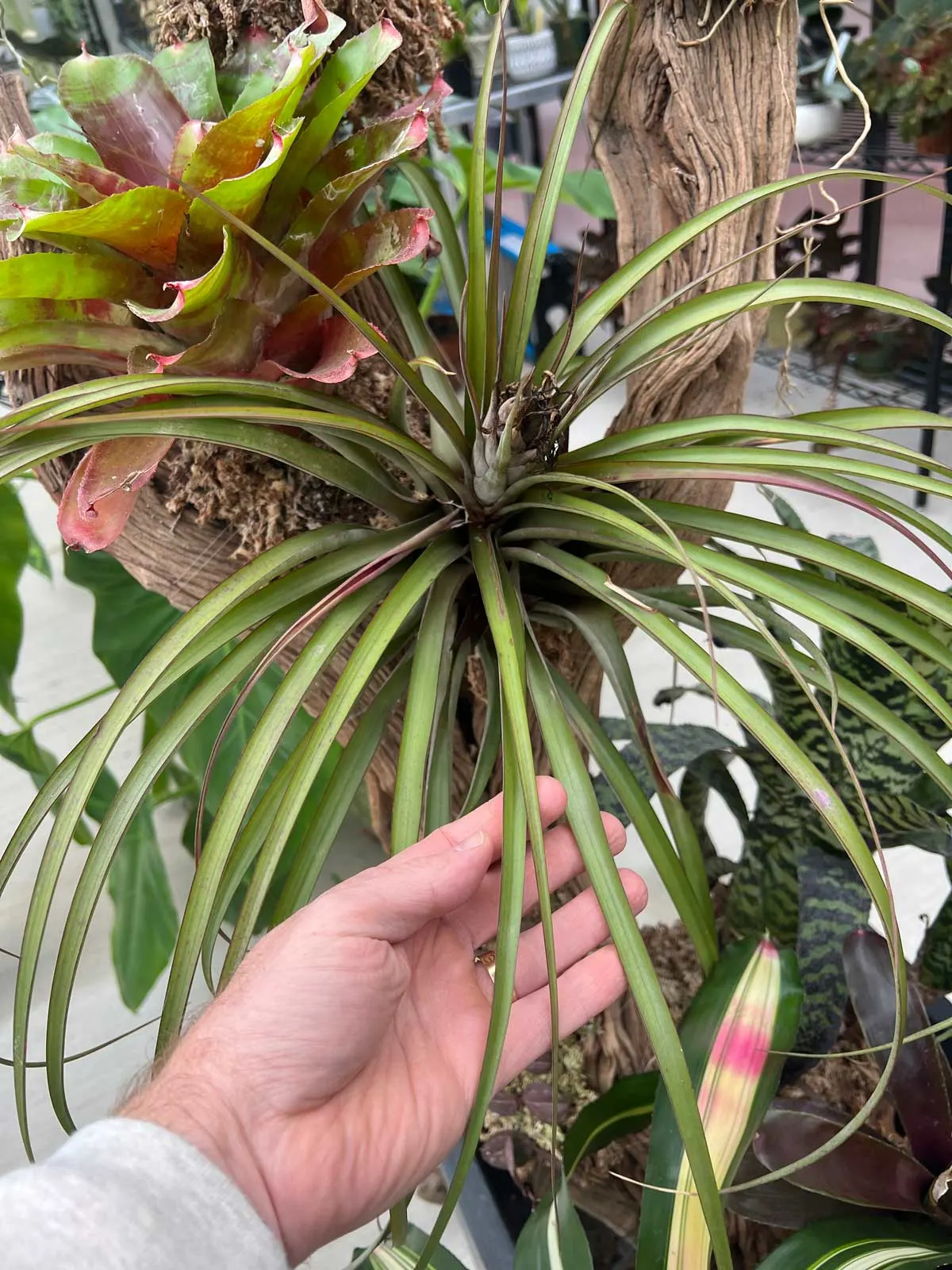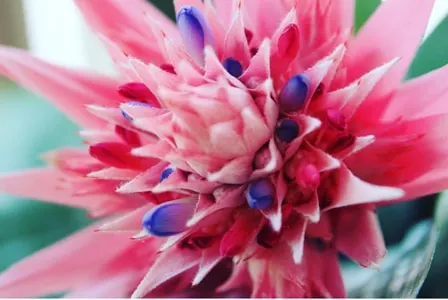Some of the links in this post may be affiliate links.
Do all air plants bloom? Discover the answers to all the commonly asked questions about air plant blooms in this post. Air plants are the common name for plants in the Tillandsia genus, and they’re a fascinating group of plants to grow indoors. Keep reading to learn 7 fun facts about air plant flowers.
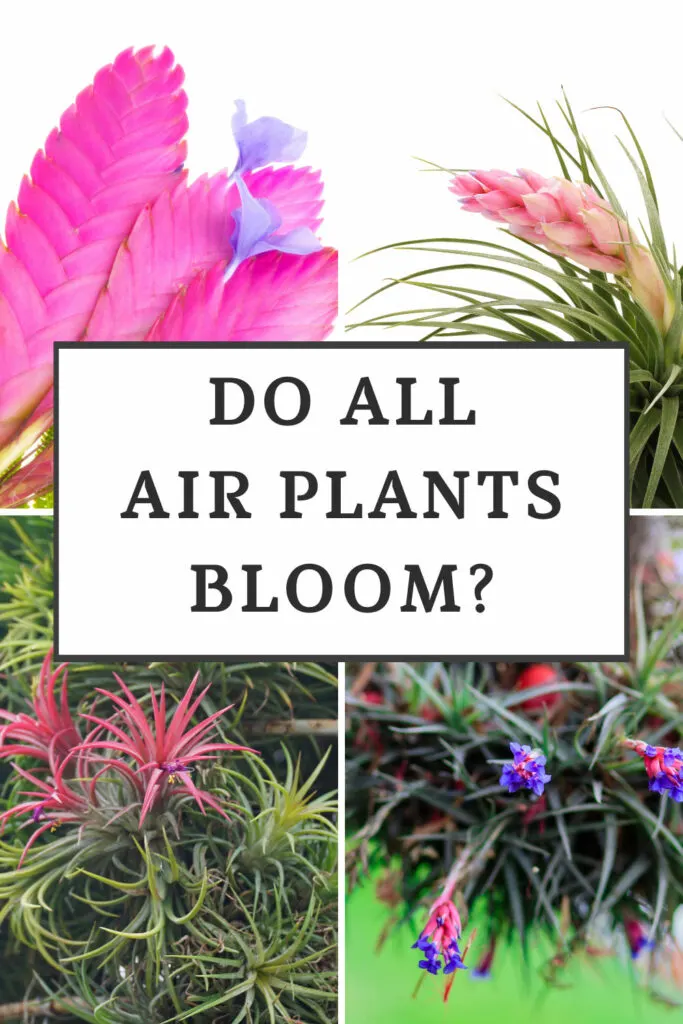
Tillansia plants, commonly known as air plants, are native to the southern parts of the United States, as well as Mexico, Central America and much of South America.
There are nearly 650 accepted air plant species and they belong to the Bromeliaceae (Bromeliad) family of plants.
Most Tillandsia species are epiphytes and therefore don’t grow in soil. In nature, they grow on tree branches, but can also grow on other surfaces such as rocks and other surfaces that they can attach onto.
They can grow in a multitude of habitats including humid environments like rainforests, and even deserts.
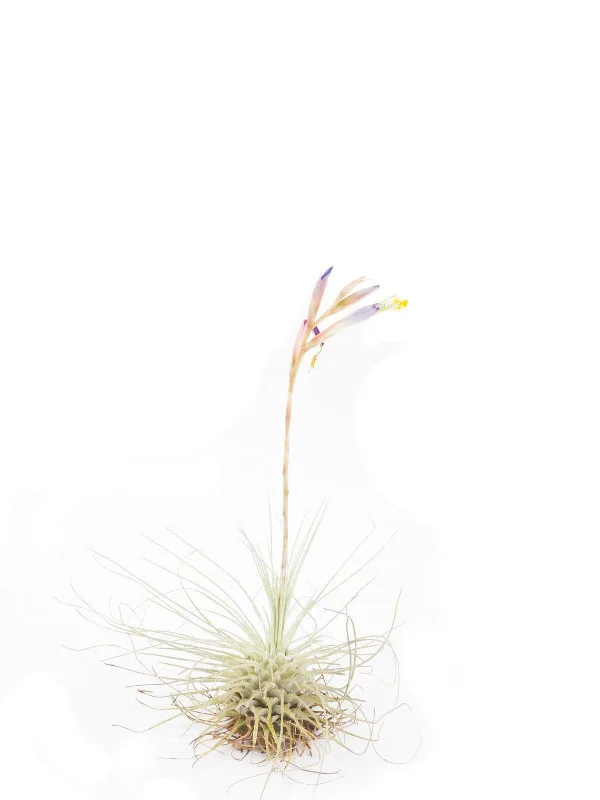
Some Tillandsia varieties such as Tillandsia xerographica are xeric air plants which means that they grow in a very arid natural habitat where they have very little rainfall and often are watered mainly by dew.
You can normally tell which air plants come from drier climates because they will typically have a gray appearance, whereas most air plants that come from tropical climates with plenty of rain are normally green.
Table of Contents
ALL ABOUT AIR PLANT BLOOMS
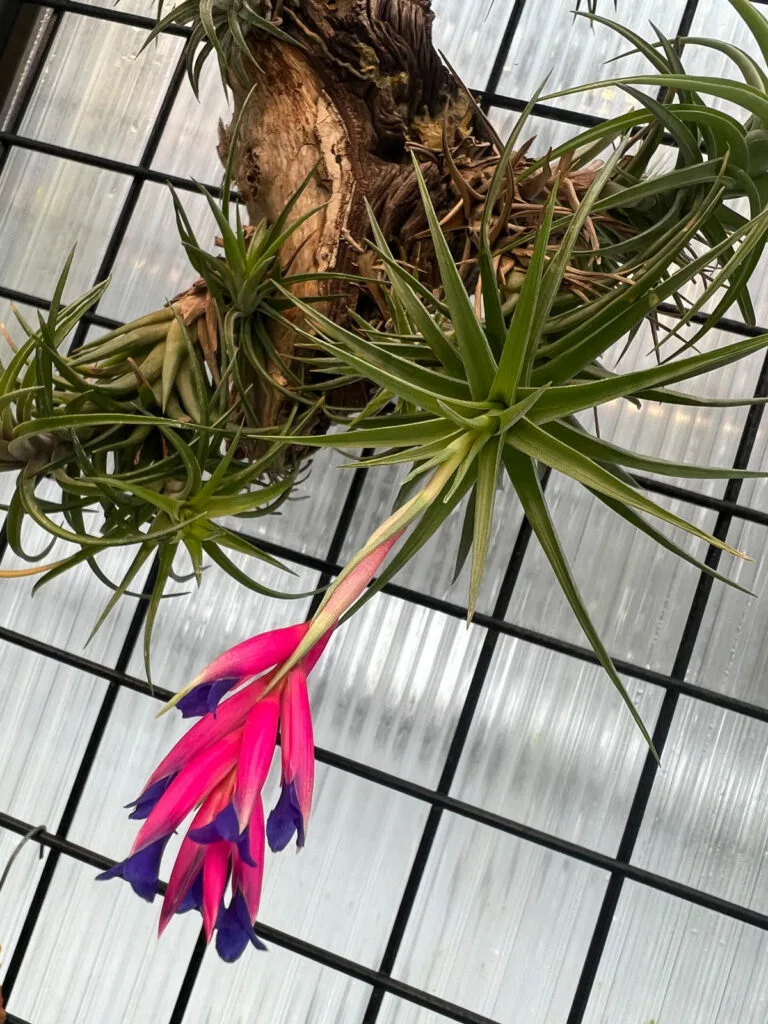
1. DO ALL AIR PLANTS BLOOM?
Yes! All Tillandsia plants will bloom, but they will vary pretty significantly in size and color.
Some air plants such as Tillandsia usneoides (commonly known as Spanish Moss) have very small green flowers that are easily missed if you don’t look too closely.
Other species are much showier, such as the bright pink flowering bract of Tillandsia cyanea. Most air plants have a large bract from which the actual flowers, which are much smaller, emerge.
In the case of Tillandsia cyanea, the flowering bract is pink and the purple flowers grow out of the bract.
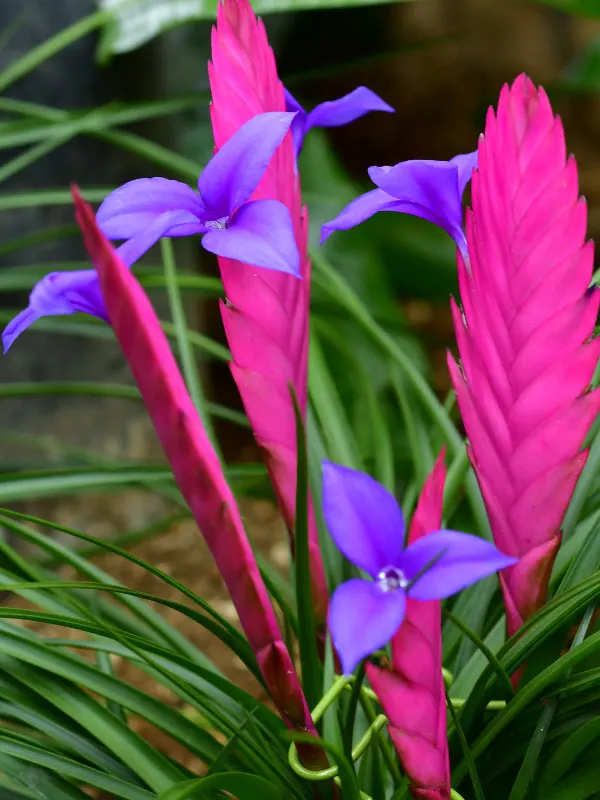
The inflorescence is the name for the complete flowering structure which includes the stem which grows out from the center of the plant, the bract, and the flowers.
Depending on the species, the flower color can vary from a pale pink (Tillandsia tectorum), red (Tillandsia funckiana), purple (Tillandsia ionantha and many others), yellow (Tillandsia crocata), green (Tillandsia usneoides), and even white (Tillandsia aeranthos).
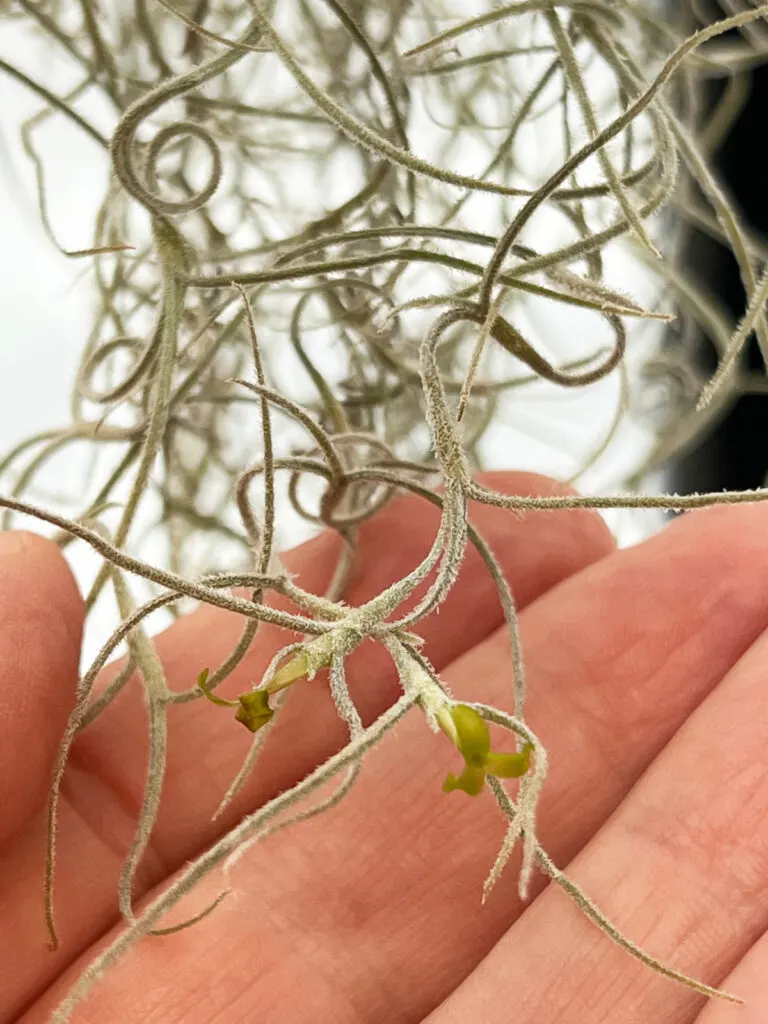
2. DO AIR PLANTS DIE AFTER BLOOMING?
Yes, but the answer is a bit more complicated than that. Once the parent plant flowers, most air plants will grow a number of baby air plants at the base of the plant.
The air plant’s life cycle is quite interesting, and Tillandsias are among the most unique plants that you can grow. Each blooming air plant will only flower once, and after the blooming period is over, the good news is that they will produce baby plants at the base.
The growth rate can be quite slow, but over time Tillandsias can form into very beautiful clumps. Why is this?
Although each parent plant will eventually die (sometimes very slowly), they will often produce two or more new air plants at the base (often called offsets or pups), which results in a beautiful cluster of plants over time.
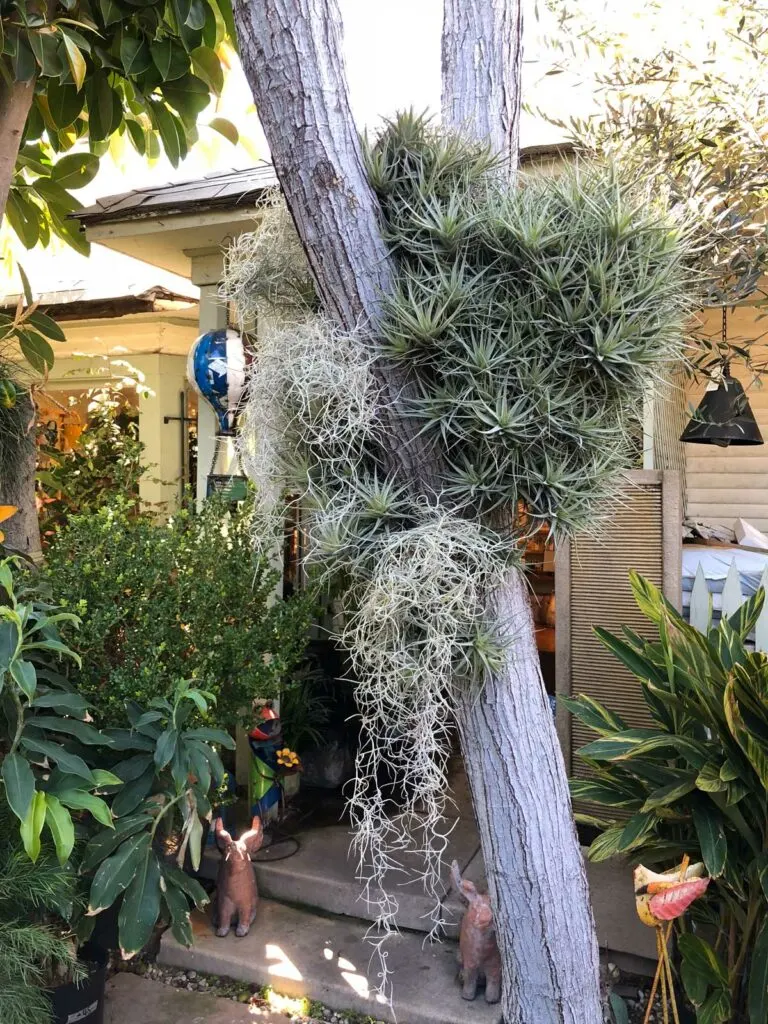
3. HOW DO YOU GET AN AIR PLANT TO BLOOM?
If you provide the right conditions indoors, your plant will bloom. The most important factor to aid in blooming is providing sufficient light.
For some reason, many people place their air plants wherever they want indoors, often far from a window. Your Tillandsia will certainly not grow, let alone bloom, in these conditions.
The best way to ensure blooming is, at a minimum, to place your air plants immediately in front of a window that has indirect light with no direct sun. An even better location would be in front of an Eastern facing window where your plant would benefit from direct morning sun.
Even a Western facing window that has late afternoon sun would work well. Avoid mid-day sun as it can potentially be too harsh depending on where you live.
How do you know how much light an air plant needs when there are so many varieties of air plants that are often not even labeled at the nursery?
A good rule of thumb is to simply look at the color of your air plant.
Gray air plants get their color from larger and denser trichomes. They can vary in appearance from gray to whitish or silver.
Trichomes are scale like structures or hairs that Tillandsias use to absorb moisture and nutrients. Gray colored air plants use their larger trichomes to better absorb the limited water from their drier climates.
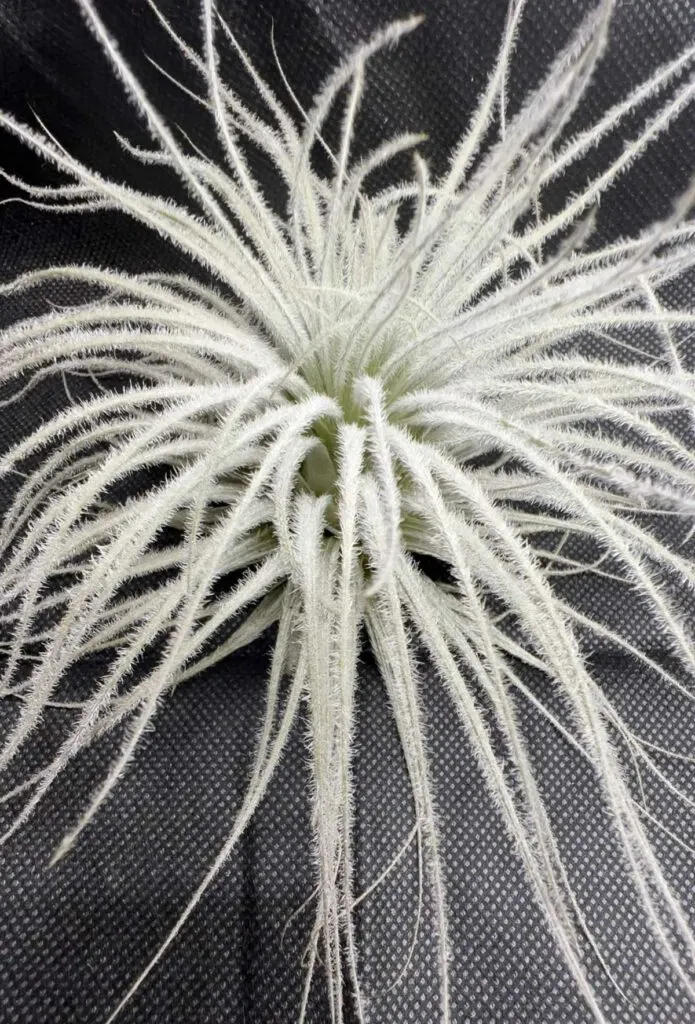
The silvery color also helps to reflect sunlight better, thus offering protection from hot sun in desert climates. So if you have any gray air plants, like Tillandsia xerographica or Tillandsia tectorum, try and give them at least half a day of direct sun indoors, if not more.
In contrast to xeric type air plants, mesic air plants typically come from areas with a lot of rainfall and these plants are usually greener in color and have a smoother appearance due to less and smaller trichomes.
These greener air plants don’t need as much direct sun as the gray ones, but they do need more frequent watering.
In addition to sufficiently bright light, your Tillandsia plants need sufficient water and fertilizer. There is a common misconception that air plants can survive on air alone, but this is not true, especially indoors.
Be sure to read my post on air plant care for more specific details on various methods of watering and fertilizing.
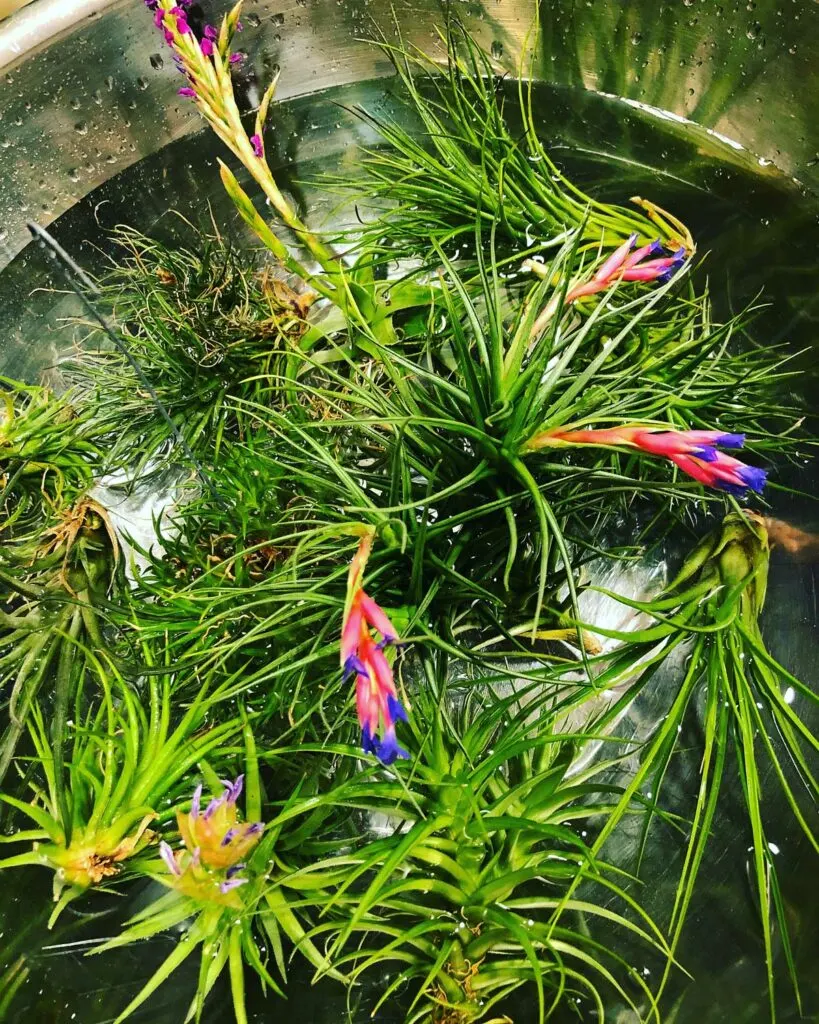
4. SHOULD I REMOVE THE FLOWER FROM MY AIR PLANT?
What most people call the flower is actually the entire bract. The flowers themselves are much smaller and grow out of the often colorful bract.
Once flowering is over and the bract starts to look ratty, you can go ahead and cut off the entire bract.
There is no harm in leaving the bract on the plant, but you may wish to cut it off in order to keep a tidier appearance.
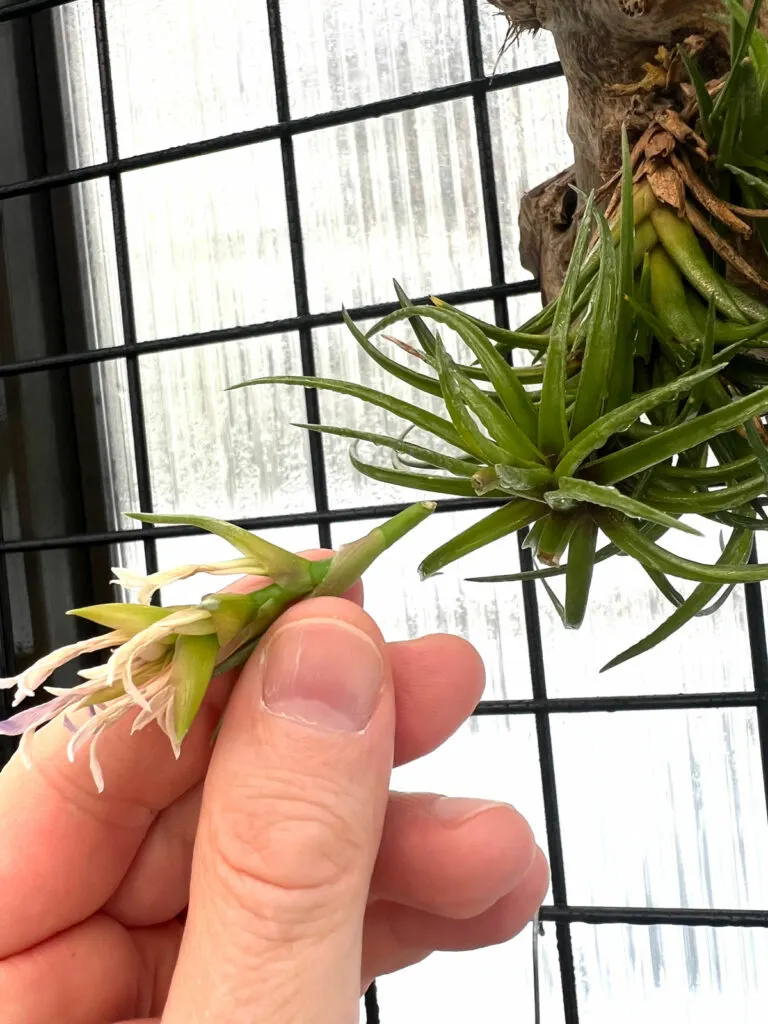
5. HOW OLD DOES AN AIR PLANT HAVE TO BE TO BLOOM?
The time that it takes your plants to bloom can vary drastically depending on the level of care that it receives, but each air plant typically can take 1-3 years to bloom from a pup.
Keep in mind though that when you purchase an air plant, they’re often close to maturity and may bloom rather quickly. Once your plant starts to grow new pups, with good care, they will usually reach blooming size in 1-3 years depending on the variety and your care condition.
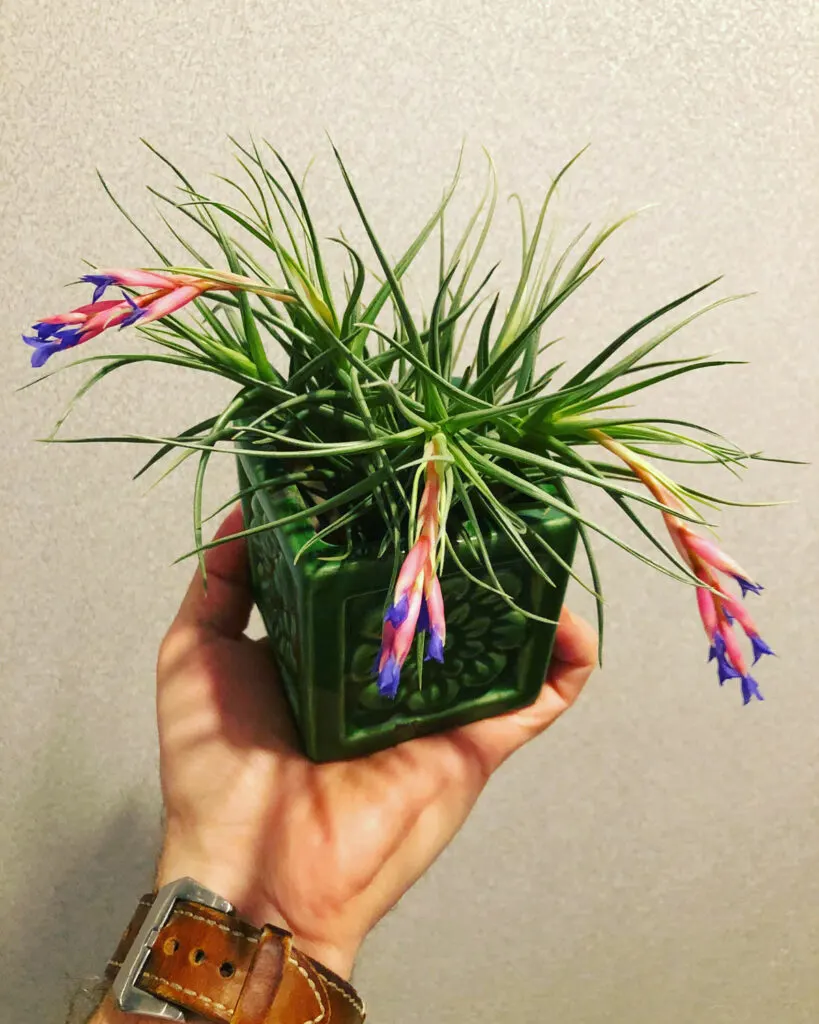
6. HOW LONG DO AIR PLANT BLOOMS LAST?
Individual flowers can last anywhere from a couple of days to a week or so. But the bracts can often last much longer and even a few weeks.
7. ARE AIR PLANT FLOWERS FRAGRANT?
There are some species of air plants that have a delightful fragrance, while others have no scent at all.
The author of an excellent book on caring for air plants called Air Plants: The Curious World of Tillandsias (like to Amazon) recommends the following species if you want fragrance:
- Tillandsia caerulea
- Tllandsia crocata (reminiscent of the scent of gardenia or jasmine)
- Tillandsia duratii (smells like grape soda)
- Tillandsia mallemontii
- Tillandsia paleacea
- Tillandsia reichenbachii
- Tillandsia straminea
- Tillandsia streptocarpa
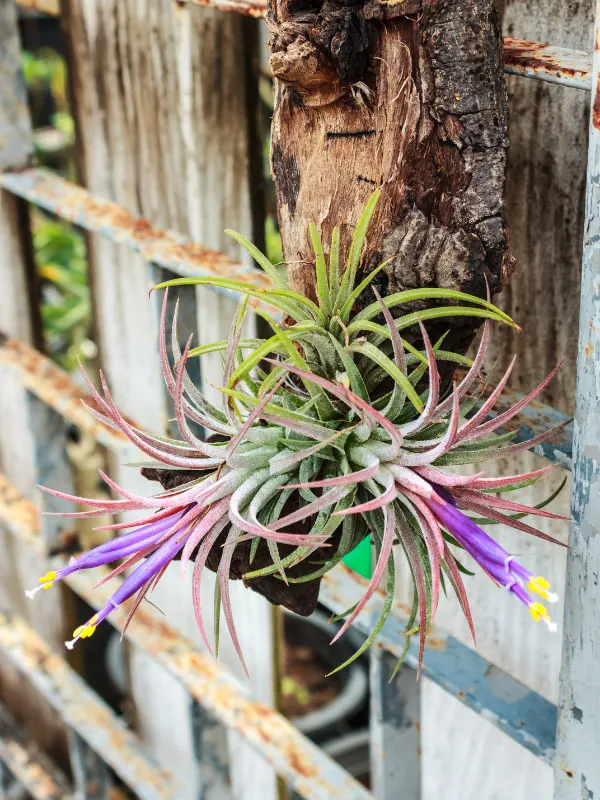
I hope you’ve enjoyed this post on air plant blooms. You may also want to check out my Tillandsia varieties post for ideas of air plants to add to your collection.
Do you have any Tillandsias? Have they flowered? Comment below. I’d love to hear!

